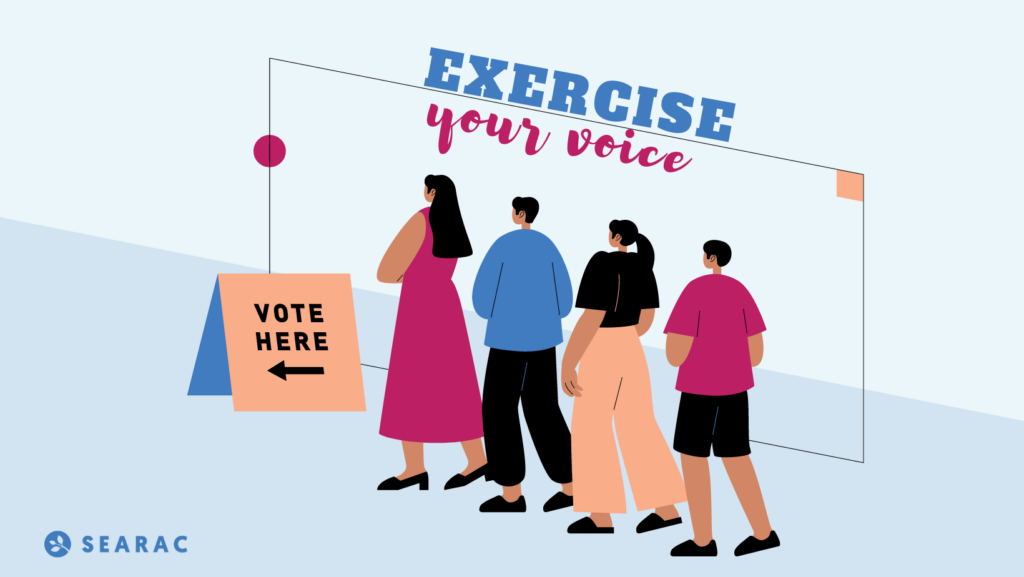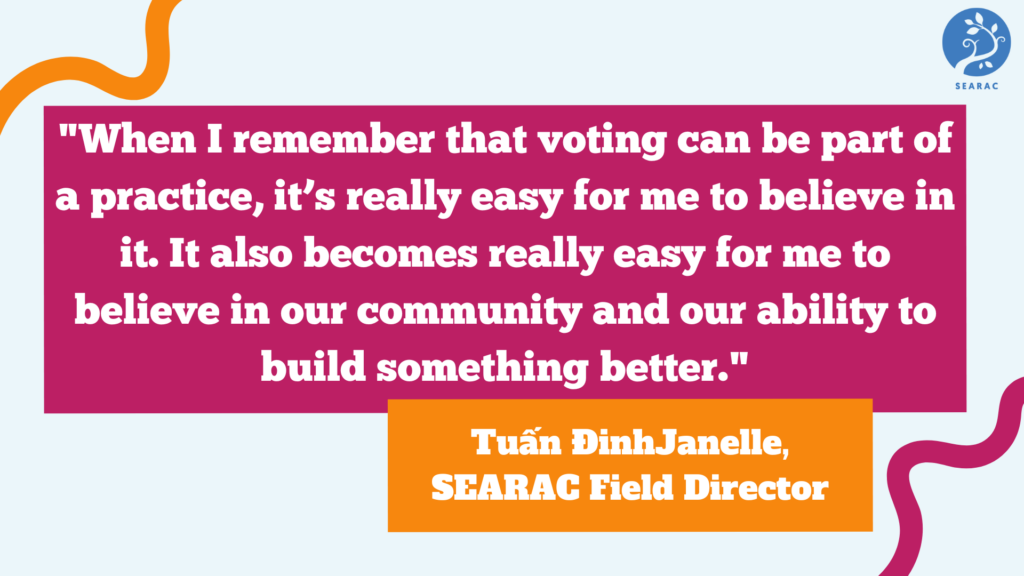November 3, 2022 IN: Our Voices, Staff Blog
Exercise your voice: Voting as a practice

By Tuấn ĐinhJanelle
Sometimes it’s hard for me to get excited about voting.
Situations like the recent abhorrent leaked remarks from the Los Angeles City Council make those moments worse. In any other American city, having a city council with the diversity of the Los Angeles city council would be an incredible win. How does voting address a situation like this? It can’t because voting by itself cannot address internalized racism.
When I heard former council member Nury Martinez’s insults against indigenous Oaxacan community members, it reminded me of the ways that internalized racism arises in our own community. By referencing skin color in labels we attribute to ethnic groups within Asian American communities, we think we are making jokes but we are just perpetuating our version of the former council member’s racism.
However if we see voting as part of a practice, I would be excited to get behind it.

For example, our community partners at ViệtUnity held a virtual panel after the Jan. 6 insurrection, where Vietnamese elders spoke about how many of them voted for the first time despite being US citizens and eligible to vote for 30+ years. They built community because they all voted in opposition to how their family and friends had voted. They felt compelled to do so because of the toxic racism they saw emerging. They educated themselves on issues through the election process. They were all women, and they found their power as voters after decades of having their labor in the home be treated as invisible.
With the ViệtUnity panel, they were embracing their newly exercised voice and talking to 20+ cháu and con (younger generation Vietnamese community members) about why they made this leap. For them, voting was a process that included learning, building community, finding personal power, asking hard questions about racism, and bridging intergenerational divides. Oh, and they cast ballots as well!
This is not the first time that I’ve been a part of such a voting practice. As a community organizer, I saw churches and temples that held multiple days of non-partisan door-knocking, community conversations, and candidate forums — all before anyone cast a single vote. For some, it was the first time in decades that they had walked the neighborhood and knocked on the doors of their neighbors.
When I remember that voting can be part of a practice, it’s really easy for me to believe in it. It also becomes really easy for me to believe in our community and our ability to build something better.
Our partners in Minnesota at the SEAD Project, CAAL, and MN8, in Fresno at Hmong Innovating Politics, in Long Beach at Khmer Girls in Action, in North Carolina at SEAC Village, and more are all doing these things. If you are in their area, join them and learn how casting a ballot is just one step in a much more powerful and awesome process.
Tuấn ĐinhJanelle is SEARAC’s Director of Field and leads SEARAC’s national field work where we use campaigns, trainings, and advocacy to build power for our communities. You can email him here.





